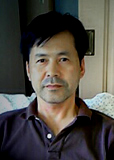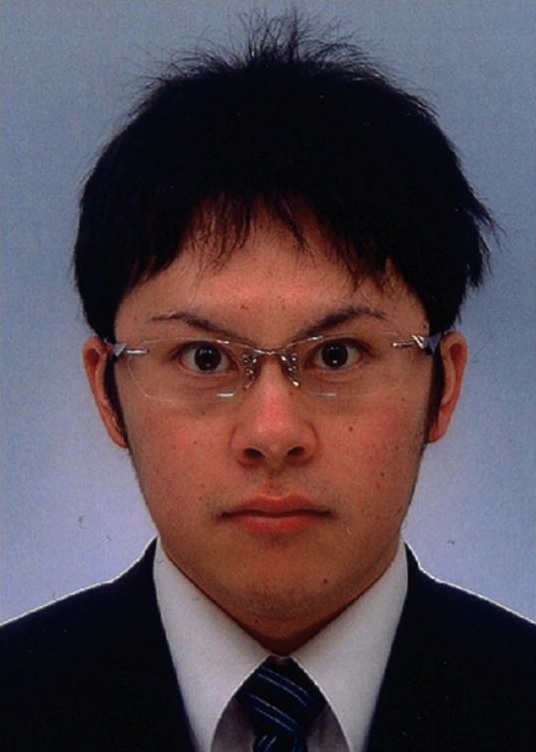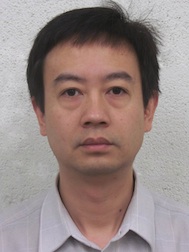|
Computer simulation is indispensable in the design and development process of advanced devices, machineries and structures.
Matsumoto Lab is dedicated to developments of advanced numerical methods in the computer-aided engineering. We mainly focus on the finite element method and the boundary element method as the numerical methods, and devlop sophisticated computation techniques and softwares, and apply them to various engineering applications such as thermo-piezoelectric harmonic vibration analyses of MEMS devices, fast boundary element computation with graphic processor GPU, designs of phononic structures for preventing transmissions of noise, shape and topology optimizations of acoustic field using the fast-multipole boundary element method and level-set method, developments of mechanical devices by using topology optimization techniques, etc.
- A new version of BEM software BEMAD for large-scale shape design sensitivity analyses of acoustic problems based on fast-multipose method was released in March 2011.
- May 5, 2011: Prof. Toshiro Matsumoto presented "Identification of defects and inclusions from thermal data by using fem design sensitivity analyses based on adjoint variable method" at ICIPE 2011, Orlando, USA.
- June 14, 2011: Prof. Takayuki Yamada presented "A level set-based topology optimization method for three-dimensional acoustic problems using fast multipole boundary element method" at 9th World Congress on Structural and Multidisciplinary Optimization (WCSMO-9), Shizuoka, Japan.
- June 14, 2011: Shinichiro Shichi presented "A Level set-based topology optimization method for three-dimensional compliance problem using boundary element method" at 9th World Congress on Structural and Multidisciplinary Optimization (WCSMO-9), Shizuoka, Japan.
- June 28-30, 2011: Prof. Toshiro Matsumoto presented "A shape sensitivity analysis approach based on boundary element method" was presented at BEM/MRM 33, Ashurst, UK.
- July 13-15, 2011: Prof. Takayuki Yamada presented "Shape sensitivity analysis of 3d acoustic problems based on BEM and its application to topology optimization" at BeTeQ 2011, Brasilia, Brazil.
- August 26-29, 2011: Garuda Fujii presented "A study on transition from photonic crystal laser to random laser" at UCLA, California, USA.
- September 6-10, 2011: Prof. Toshiro Matsumoto presented "Topology optimization of elastic solids using BEM and level-set approach" at ICCES MM11, Zonguldak, Turkey.
|
Plot of electric amplitude of a random photonic laser model obtained by an FEM analysis.
|

|
He has been studying the boundary element method (BEM) and is currently interested in the application of BEM to its applications to shape optimization probles. This topic has been revisited due to the emergence of the fast computation algorithm in BEM without vast storage requirements also for large-scale problems. He teaches the finite element method at a lecture.
|

|
He is particulary interested in the fast-multipole boundary element method for transient wave scattering phenomena in elastic media. His research is focused on developments of fast and parallel boundary element algorithms, black box fast multipole boundary element methods, and application of BEM to wave scattering problems of various periodic structures. Go to his personal page.
|

|
He specializes topology optimization of solids based on the level-set functions and the finite element method. He is currently interested
in using the boundary element method as the analysis tools because of its advantage in meshing.
|

|
Research Fellow of JSPS staying at Matsmoto Lab from April of 2011. He is an Associate Professor of Guilin University of Electric Engineering, China. He is studying wavelet fininte element methods based on the second generation wavelet and is applying it to the detections of cracks in rotating shafts.
|
Computer simulations are widely used in the design and developement processes of devices, machineries, structures, etc., to predict their performance and physical behaviors.
Since more and more complicated computation models and accurate simulations are demanded, developement of advanced computation techniques for more complicated physical phenomena and fast computation algorithms for large degrees of freedoms are getting important.
Our research themes are concerned with devlopment of advanced numerical methods and their applications to designs of sophisticated devices and structures using the developed numerical methods.
The finite element method and boundary element method are mainly foces on as the computational approaches.
The boundary element method requires only the boundary meshing. The drawbacks that existed intrinsically in the BEM has been resolved as the consequence of the emergence of fast computation algorithms based on the multipole expansion of the fundamental solution.
Therefore, not only the finite element method but also the boundary element method is now one of the strong simulation tools in the computer-aided engineering, particulary in shape and toplogy optimization problems that require re-meshings through optimization processes.
The followings are some of the topics we are currently coping with.
- Development of advanced numerical methods in computational mechanics
- Fast multipole boundary element method for design sensitivity analysis of three-dimensional acoustic field
- Development of fast and large scale computation algorithms for boundary element method using GPU
- Thermoelastic damping analysis of micro-scale piezoelectric materials using multiple precision eigen value analysis
- Finite element analysis of photonic random laser
- Boundary element simulations of extraordinary elastic wave transmissions
- Eigen frequency analysis based on boundary element analyses
- Designs of phononic structures to prevent noise transmissions
- Development of optimization methods and application to structural design problems
- Shape and topology optimization of acoustic fields by using fast-multipole boundary element method and level-set method
- Shape and topology optimization of three-dimensional elstic solids by using BEM and level-set method
- Topology optimization of three-dimensional elstic solids based on iterative remeshing by using FEM and level-set method
- Development of MEMS devices and meta materials using topology optimization techniques
Students are welcome to join the numerous annual events listed below:
- Welcome party on April 12, 2011
- Summer BBQ party
- Sports match in summer term
- Lab excursion in September
- Year-end party in December
- Farewel party in March
The annual events before 2010 are found at this link.
Matsumoto Lab is in the Eng. Buld.#7, very close to North COOP Store and Restaurant. The building is a bit old but the rooms are farely clean. The undergraduate students are also offered there own rooms and PCs. There is a shower room on the first floor and hot water and gas are supplied in the rooms. There is also a lounge that can be used for relaxing, coffee break, lunch, reading magazines, and something else. Students can come to the lab at any time, and are free to go home at any time as well. But they are requested to produce good results in their studies and from the research works.
|
|
Prof. Keisuke Kamiya, Aichi Institute of Technology (Associate Professor of Nagoya University until March 2006)
Dr. Akihiro Suzuki, Toyota Industries Corporation (Research Associate of Nagoya University until January 2006)
| 2010 |
Joint Education Program Zheng Changjun
Graduate Shinya Harada, Devendra Bhetuwal, Masaki Nakayama, Ryota Watanabe, Zhang Jian, Du Xiao, Akihisa Suzuki
Undergraduate Shinya Kimura, Kohei Kuriyama, Katsuhiko Odake, Kento Ayabe, Motoki Kamiya, Masatake Kobayashi, Hitoshi Matsuda, Yusuke Takagi |
| 2009 |
Graduate Yuta Kawaguchi, Shun Sugita, Rintaro Horizumi, Kenshiro Shibata, Guan Wang, Kazuhiro Yoshida |
Undergraduate Yuta Fujinaka, Mingzhe Huang, Shogo Nagai, Shuichi Oyama, Shinichiro Shichi, Masashi Yamaguchi, Nik Zuwairi |
| 2008 |
Graduate Garuda Fujii, Toru Murata, Yasushi Nakamura, Yuri Sakaki, Satoshi Taniguchi |
Undergraduate Hidetake Takahashi, Devendra Bhetuwal, Kenji Fujisawa, Keisuke Futonaka, Shinya Harada, Tomohiko Nakamura, Masaki Nakayama, Ryota Watanabe, Keisuke Mito |
Research Student Shin Yong Bin |
| 2007 |
Graduate Michiaki Takagi, Hironori Ito, Issei Doi, Takahiro Naito, Jun Nakamura |
Undergraduate Yuta Kawaguchi, Kenshiro Shibata, Suhun Sugita, Hidetake Takahashi, Takuma Nakagawa, Masatatsu Nakasone, Takumi Nakamura, Rintaro Horizumi, Akihiro Maeno |
| 2006 |
Graduate Yoshiyuki Kitamura, Naoki Kobayashi, Kentaro Tajima, Takeshi Yanagihara, Terumitsu Yoshinaga |
Undergraduate Atsushi Usui, Akiyuki Okuda, Hisashi Sakurai, Yusuke Shikata, Satoshi Shimamura, Satoshi Taniguchi, Kenji Nagata |
| 2005 |
Graduate Masaaki Amano, Takafumi Ishiuchi, Yusuke Kawai, Yusuke Suzuki, Yuichi Mizuno |
Undergraduate Hironori Ito, Naoto Sakakibara, Zaidatul Akmal, Satoshi Shimamura, Issei Doi, Takahiro Naito |
| 2004 |
Graduate Hajime Eguchi, Masakazu Kobayashi, Yoichi Shikai, Hiroshi Nakamura, Jun Mihara |
Undergraduate Kohei Iida, Yoshiyuki Kitamura, Masatoshi Kunieda, Takashi Sakaida, Yusuke Samashima, Tomohito Takahashi, Takeshi Yanagihara, Daisuke Yoshimura |
- Nagoya University
- Academic links
|
- Domestic meetings and conferences
- 15th JSCES Conference (May 25-27, 2011, Kashiwa Campus of the University of Tokyo, Japan)
- The International Conference on Computational Science (ICCS2011) (June 1-3, 2011, Tsukuba International Congress Center, Japan)
- M&M 2011: Materials & Mechanics Conference of JSME (15-18 July 2011, Kushu Institute of Technology, Japan)
- CMD 2011: JSME 24th Computational Mechanics Division Conference (8-10 October 2011, Tsushima Campus, Okayama University, Japan)
- 2011 Annual Conference of JSME (11-15 September 2011, Tokyo Institute of Technology, Japan)
- 21st Design & Systems Division Conference of JSME (21-23 October 2011, Yamagata University, Japan)
- JASCOME symposium 2011 (16 December 2011, Kagawa University, Japan)
- International conferences
- ICIPE 2011: The 7th International Conference on Inverse Problems in Engineering (4-6 May 2011, University of Central Florida in Orlando, Florida, USA)
- International Conference on Boundary Element Techniques (13-15 July 2011, Brasilia, Brazil)
- WCSMO9: 9th World Congress on Structural & Multidisciplinary Optimization (13-17 June 2011, GRANSHIP Shizuoka, Japan)
- BEM/MRM 2011: 33rd International Conference on Boundary Elements and other Mesh Reduction Methods (28-30 June 2011, New Forest, UK)
- IABEM 2011: Symposium of the International Association for Boundary Element Methods (5-8 September 2011, Brescia, Italy)
- ICCES MM 2011: ICCES Special Symposium on Meshless and Other Novel Computational Methods (6-10 September 2011, Emirgan Hotel, Zonguldak, Turkey)
- 10th. World Congress on Computational Mechanics (8-13 July 2012, São Paulo, Brazil)
|
Address
Eng. Build. 7-A, Furo-cho, Chikusa-ku, Nagoya 464-8603, Japan
By train from JR Nagoya Station
Take the subway "Higashiyama Line" for FUJIGAOKA from JR Nagoya Station, then transfer the subway to "Meijo Line" at MOTOYAMA station. Take a train going clockwise direction and get off at NAGOYA DAIGAKU, which is the next station from MOTOYAMA. It may take approximately 30 minutes from Nagoya Station.
|
|
Show a Google Map of the campus
|
Boundary Element Method: BEMAD
- Potential problems governed by Laplace's equation (steady-state heat conduction, electrostatics and magnetostatics, etc.)
- Acoustic problems
- Elastostatic problems
- Time-harmonic elastodynamic problems
- Time-harmonic linear piezoelectric vibration
- Thermoelastic problems with temperature dependent material properties
Finite Element Method: FERITAS
- Potential problems (steady-state heat conduction, electrostatics and magnetostatics, etc.)
- Elastostatic problems
- Thermolastic problems
- Time-harmonic elastodynamic problems
Pre- and Post-processing: AKIMESH
- Mesh discretization (Delauney triangulation, 2D, 3D)
- Boundary extraction and discretization with tetra hedrons
- Values of level-set function
- Mesh
- Deformation and scalar values
|

